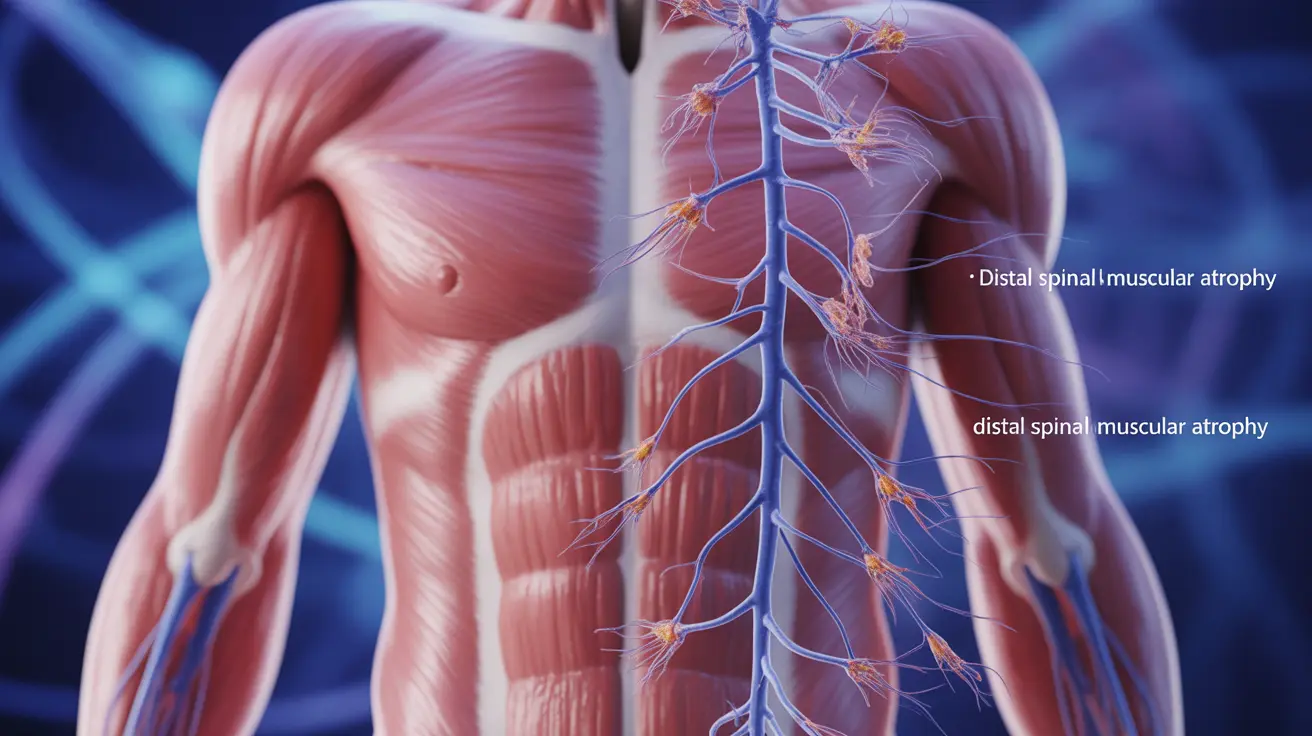Distal spinal muscular atrophy (dSMA) is a rare genetic condition that primarily affects the motor neurons controlling muscle movement in the body's extremities. This progressive disorder can significantly impact quality of life, but understanding its nature, symptoms, and available treatments is crucial for both patients and caregivers.
As a distinct form of motor neuron disease, dSMA requires careful medical attention and ongoing management. This comprehensive guide explores the key aspects of distal spinal muscular atrophy, from its early signs to current treatment approaches.
Understanding the Condition and Its Impact
Distal spinal muscular atrophy primarily affects the peripheral muscles, particularly those in the hands and feet. Unlike other forms of spinal muscular atrophy that may impact the entire body, dSMA's effects are typically more localized to the distal muscles, hence its name.
The condition results from genetic mutations that affect motor neurons, leading to progressive muscle weakness and atrophy. Understanding these underlying mechanisms is crucial for proper diagnosis and treatment planning.
Key Symptoms and Disease Progression
The manifestation of distal spinal muscular atrophy typically begins with specific symptoms that may worsen over time:
- Muscle weakness in hands and feet
- Decreased grip strength
- Difficulty with fine motor tasks
- Muscle cramping and twitching
- Progressive walking difficulties
- Reduced reflexes in affected areas
The progression rate varies significantly among individuals, with some experiencing slower advancement of symptoms while others may face more rapid changes in muscle function.
Diagnostic Process and Genetic Testing
Diagnosing distal spinal muscular atrophy involves a comprehensive evaluation process:
- Detailed medical history review
- Physical examination
- Genetic testing for specific mutations
- Electromyography (EMG) studies
- Nerve conduction tests
- Muscle biopsy when necessary
Early and accurate diagnosis is crucial for implementing appropriate treatment strategies and managing the condition effectively.
Treatment Approaches and Management Strategies
While there is no cure for distal spinal muscular atrophy, several treatment approaches can help manage symptoms and improve quality of life:
Physical Therapy and Exercise
Regular physical therapy sessions and appropriate exercise programs can help maintain muscle strength and function. These interventions are tailored to each patient's specific needs and capabilities.
Occupational Therapy
Occupational therapy helps patients adapt to daily activities and maintain independence through specialized techniques and adaptive equipment.
Medical Interventions
Various medical treatments may be recommended, including:
- Pain management strategies
- Anti-inflammatory medications
- Muscle relaxants when needed
- Regular monitoring of respiratory function
- Prevention of complications
Lifestyle and Nutritional Considerations
Maintaining overall health through lifestyle modifications can significantly impact symptom management:
- Balanced nutrition for muscle health
- Proper hydration
- Adequate rest and stress management
- Regular but moderate physical activity
- Environmental modifications for safety
- Ergonomic adaptations at home and work
Frequently Asked Questions
What are the primary symptoms of distal spinal muscular atrophy, and how does it progress over time? The primary symptoms include muscle weakness in hands and feet, decreased grip strength, and difficulty with fine motor tasks. The condition typically progresses gradually, with varying rates of advancement among different individuals.
How is distal spinal muscular atrophy diagnosed, and what genetic tests are typically involved? Diagnosis involves a combination of clinical examination, genetic testing for specific mutations, EMG studies, and nerve conduction tests. Genetic testing specifically looks for mutations associated with dSMA.
What are the current treatments and management strategies for distal spinal muscular atrophy? Treatment strategies include physical therapy, occupational therapy, pain management, and preventive care. While there's no cure, these interventions help manage symptoms and maintain quality of life.
Can lifestyle changes or nutritional adjustments help manage symptoms of distal spinal muscular atrophy? Yes, maintaining proper nutrition, staying physically active within limitations, and making appropriate lifestyle modifications can help manage symptoms and support overall health.
How does distal spinal muscular atrophy differ from other forms of spinal muscular atrophy, and what are the key genetic factors involved? Distal SMA primarily affects the extremities rather than the entire body, and it involves specific genetic mutations affecting motor neurons. Its pattern of muscle weakness is more localized compared to other forms of SMA.




